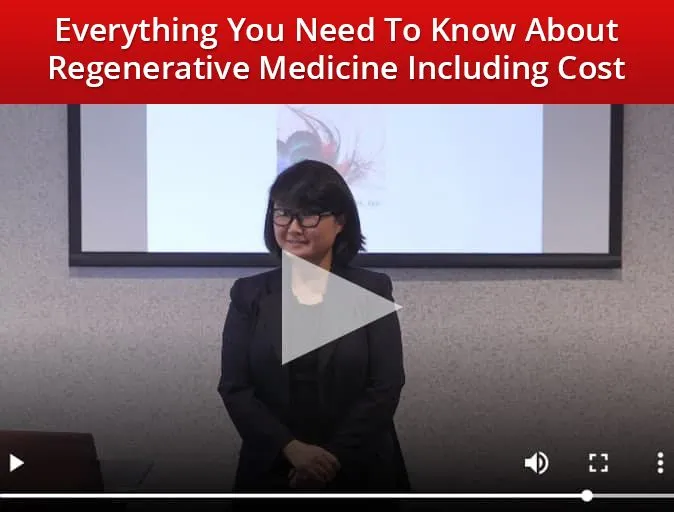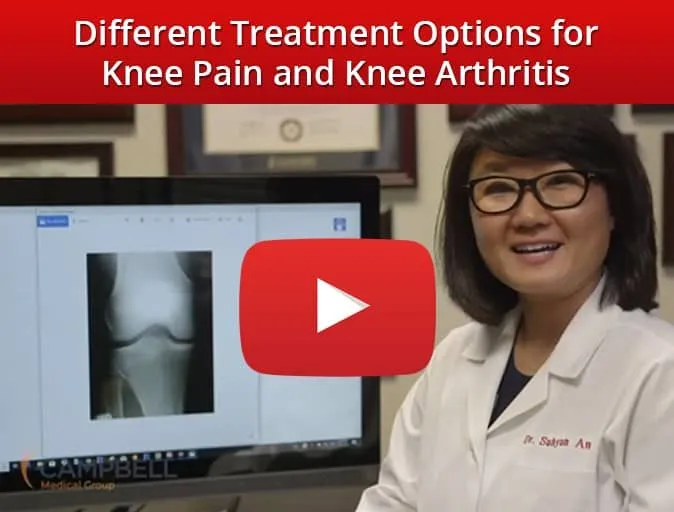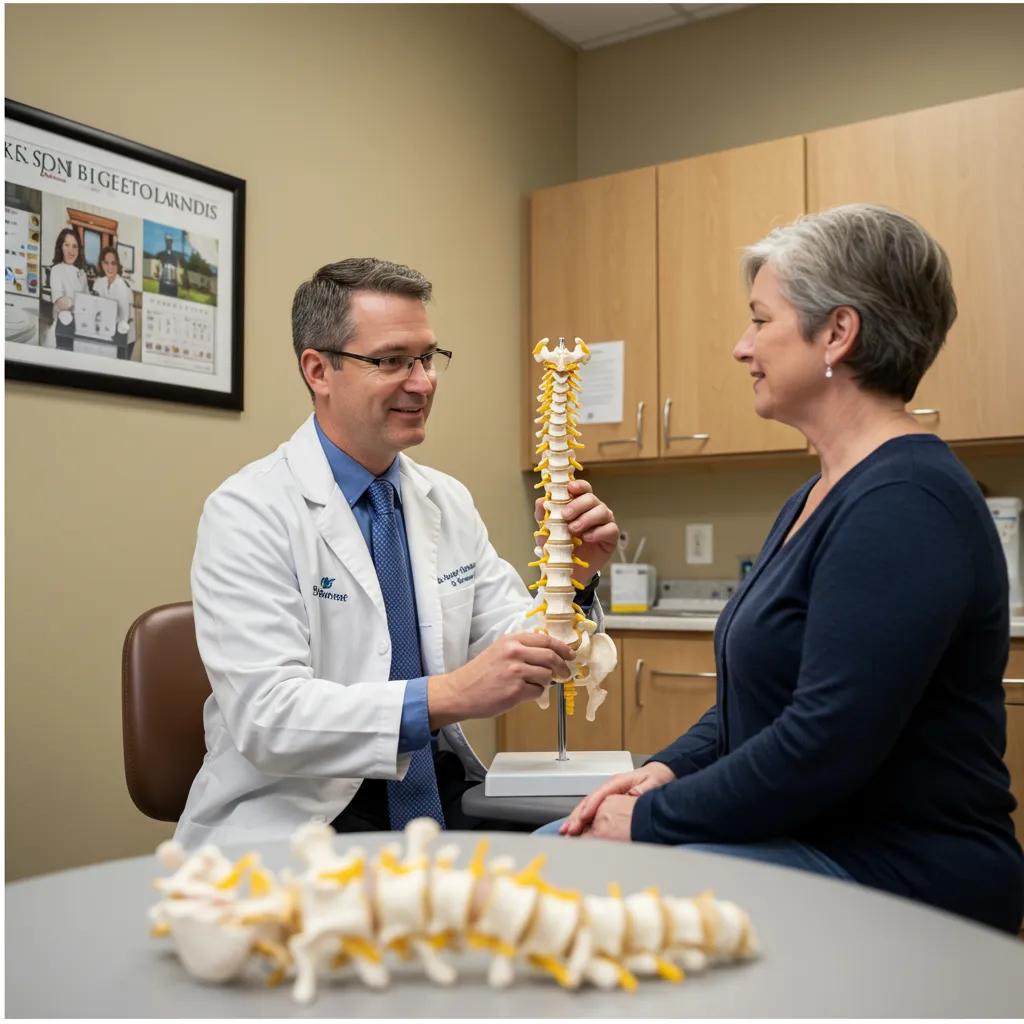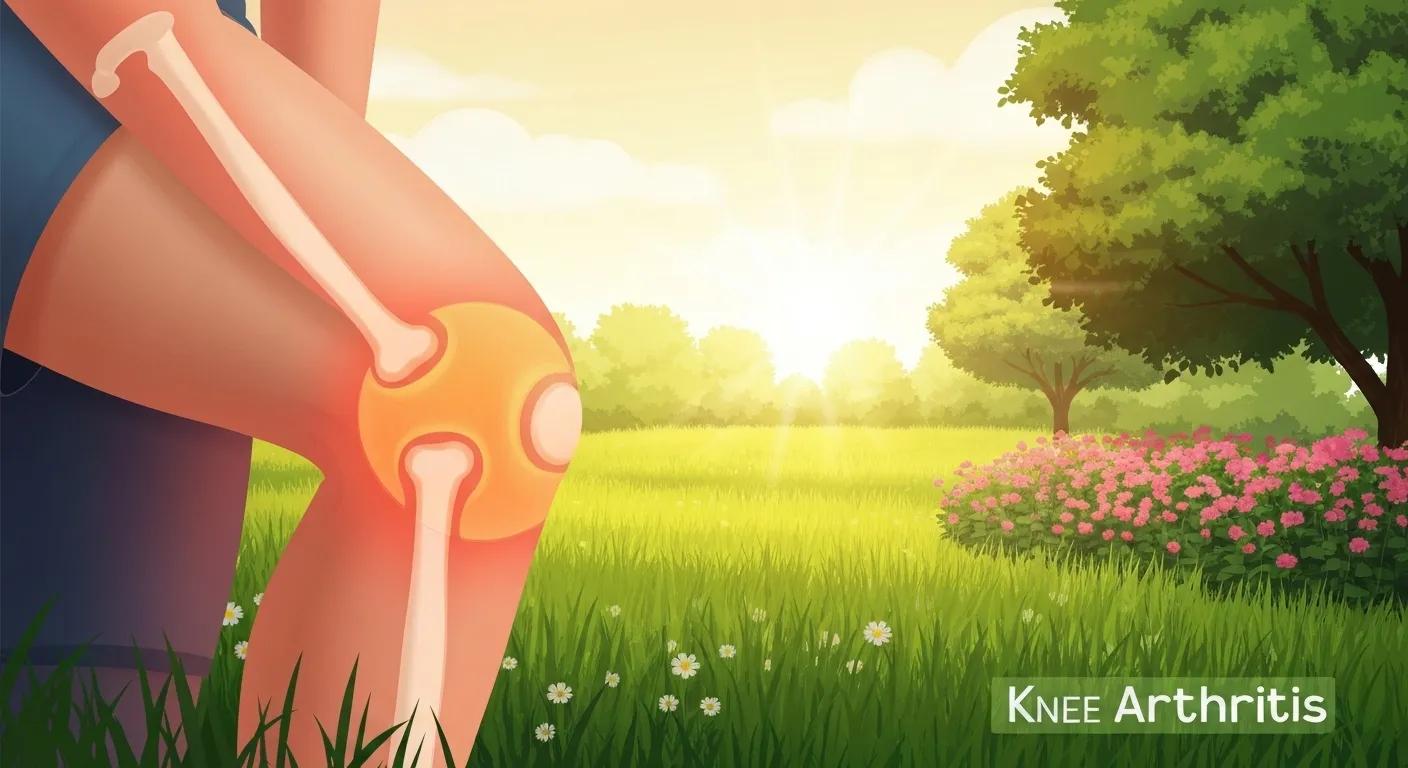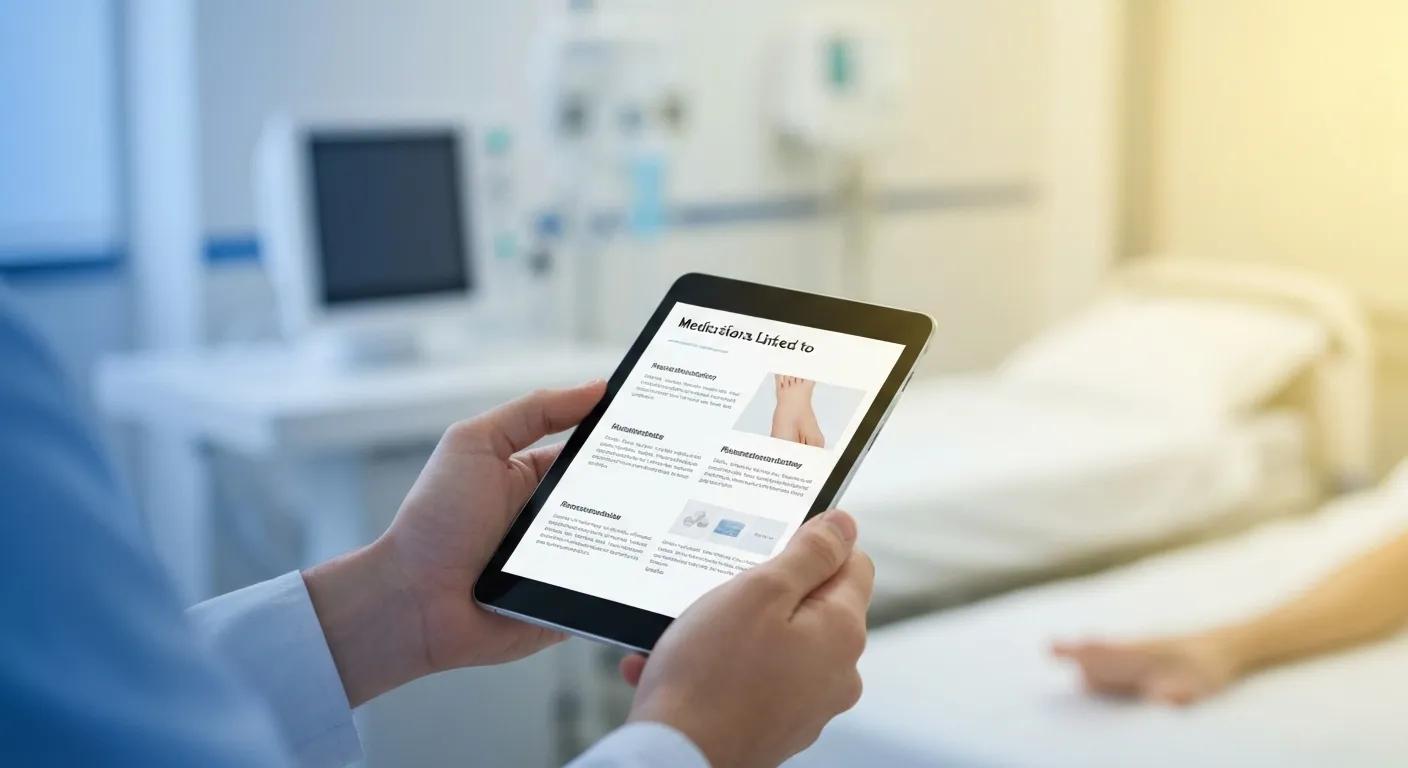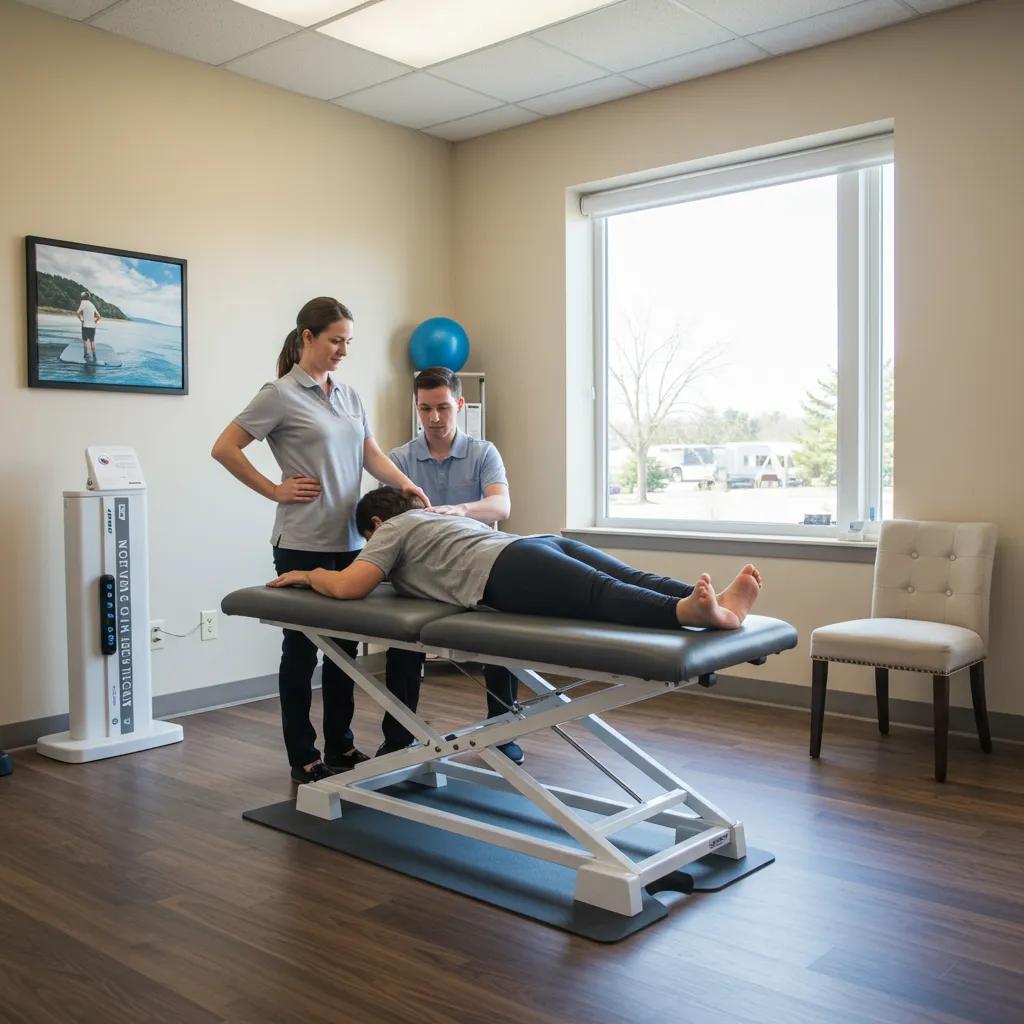
Non-Surgical Pain Relief Strategies in Houston: Effective Treatments for Back, Knee, and Neuropathy Pain
Persistent pain in your spine, joints, or nerves can significantly impact your daily life. Fortunately, non-surgical pain relief strategies in Houston offer effective solutions that target the root causes of your discomfort without the need for inv
Essential Non-Surgical Pain Relief Strategies for Back, Knee, and Neuropathy Pain
This list outlines key non-surgical pain relief strategies available in Houston, focusing on effective treatments for back, knee, and neuropathy pain. Each method is designed to alleviate discomfort and enhance recovery without the need for invasive procedures.
- Physical Therapy – Customized exercise programs that strengthen muscles, improve flexibility, and enhance spinal alignment, effectively reducing pain and promoting healing.
- Epidural Steroid Injections – Targeted injections that deliver anti-inflammatory medication directly to the epidural space, providing rapid relief from nerve-related pain.
- Spinal Decompression Therapy – A non-invasive technique that alleviates pressure on spinal discs, promoting healing and reducing pain associated with herniated discs.
- Facet Joint Injections – Injections that target the small joints in the spine, providing immediate pain relief and improving mobility for conditions like arthritis.
- Regenerative Medicine – Treatments such as Platelet-Rich Plasma (PRP) therapy that utilize the body’s natural healing processes to repair damaged tissues and reduce inflammation.
- Genicular Artery Embolization – A minimally invasive procedure that reduces knee pain by blocking blood flow to inflamed tissues, particularly effective for osteoarthritis.
- Nerve Blocks – Injections that interrupt pain signals from specific nerves, offering quick relief and enabling better participation in rehabilitation.
- Lifestyle Modifications – Changes such as ergonomic adjustments, weight management, and stress reduction techniques that support overall pain management and enhance treatment outcomes.
- Telemedicine Support – Virtual consultations that provide ongoing guidance and adjustments to treatment plans, ensuring continuous support and monitoring of progress.
asive procedures. This guide explores evidence-based approaches, from specialized physical therapy and targeted injections to regenerative medicine and lifestyle adjustments. Discover how Campbell Clinic’s expertise in orthopaedic pain management can help you achieve lasting relief. You’ll find information on common back pain treatments, advanced knee care options, neuropathy therapies, interventional pain management techniques, reasons to choose our clinic, answers to common patient questions, and how physical therapy combined with healthy habits can enhance your results.
What Are the Most Common Non-Surgical Treatments for Back Pain in Houston?
Our approach to non-surgical back pain relief combines rehabilitation, minimally invasive interventions, and patient-driven lifestyle changes to reduce inflammation, restore function, and prevent future pain episodes. At Campbell Clinic, we focus on personalized physical therapy programs, image-guided injections, decompression therapies, joint injections, and comprehensive lifestyle support to optimize your recovery without surgical intervention.
How Does Physical Therapy Help Relieve Back Pain Without Surgery?
Physical therapy addresses muscle imbalances, joint stiffness, and core instability through customized exercise plans. By incorporating manual mobilization, targeted strengthening of your lumbar stabilizers, and specific stretching routines, our therapists enhance spinal alignment, reduce nerve irritation, and promote tissue healing. This process improves flexibility and stabilizes your spine, which in turn lessens pain signals and builds long-term resilience.
What Are Epidural Steroid Injections and How Do They Work for Back Pain?
Epidural steroid injections deliver potent anti-inflammatory medication directly into the epidural space surrounding your nerve roots, effectively reducing swelling and interrupting pain signals. Using advanced image guidance, we ensure precise placement, allowing corticosteroids to calm nerve irritation caused by conditions like herniated discs or spinal stenosis. Patients often experience significant relief within days, enabling them to move more freely and participate more effectively in rehabilitation.
When Is Spinal Decompression Recommended for Non-Surgical Back Pain Relief?
Spinal decompression is recommended when mechanical pressure on your discs or nerves persists despite other conservative treatments. This therapy utilizes controlled traction to create negative pressure within your intervertebral spaces, encouraging disc retraction and improving nutrient exchange. It’s an ideal option for individuals experiencing disc bulges, early-stage herniations, or facet joint overload, as it can decrease intradiscal pressure and restore proper spinal biomechanics.
What Are Facet Joint Injections and Their Benefits for Back Pain?
Facet joint injections target the small joints that facilitate spinal movement, delivering anesthetic and anti-inflammatory agents directly into the joint capsule. By numbing nerve endings and reducing joint inflammation, these injections provide immediate pain relief and improve your range of motion. This treatment is particularly effective for facet arthropathy and spinal osteoarthritis, supporting functional recovery and potentially delaying the need for surgery.
How Do Lifestyle Modifications Support Non-Surgical Back Pain Treatment?
Lifestyle changes—including ergonomic adjustments, weight management, adopting an anti-inflammatory diet, and stress reduction techniques—complement clinical therapies by addressing systemic factors contributing to pain. Regular low-impact exercise boosts circulation, healthy sleep patterns aid tissue repair, and maintaining good posture minimizes undue stress on your spine. These patient-driven habits reinforce treatment outcomes and promote sustainable spinal health.
Non-Pharmacological and Non-Surgical Treatments for Low Back Pain: A Cochrane Review
Low back pain (LBP) is a significant public health issue due to its high prevalence and associated disability burden. Clinical practice guidelines recommend non‐pharmacological/non‐surgical interventions for managing pain and function in people with LBP.ObjectivesTo provide accessible, high‐quality evidence on the effects of non‐pharmacological and non‐surgical interventions for people with LBP and to highlight areas of remaining uncertainty and gaps in the evidence regarding the effects of these interventions for people with LBP.
Non‐pharmacological and non‐surgical treatments for low back pain in adults: an overview of Cochrane reviews, RRN Rizzo, 2025
How Can Non-Surgical Strategies Effectively Treat Knee Pain in Houston?
Knee pain relief without surgery involves rehabilitation, targeted injections, regenerative biologics, and advanced interventional options designed to restore joint function and potentially delay or avoid the need for knee replacement. By integrating evidence-based treatments, Campbell Clinic develops personalized plans to address cartilage wear, inflammatory processes, and mechanical issues associated with osteoarthritis, meniscal injuries, and overuse syndromes.
What Are the Best Physical Therapy Approaches for Knee Pain Relief?
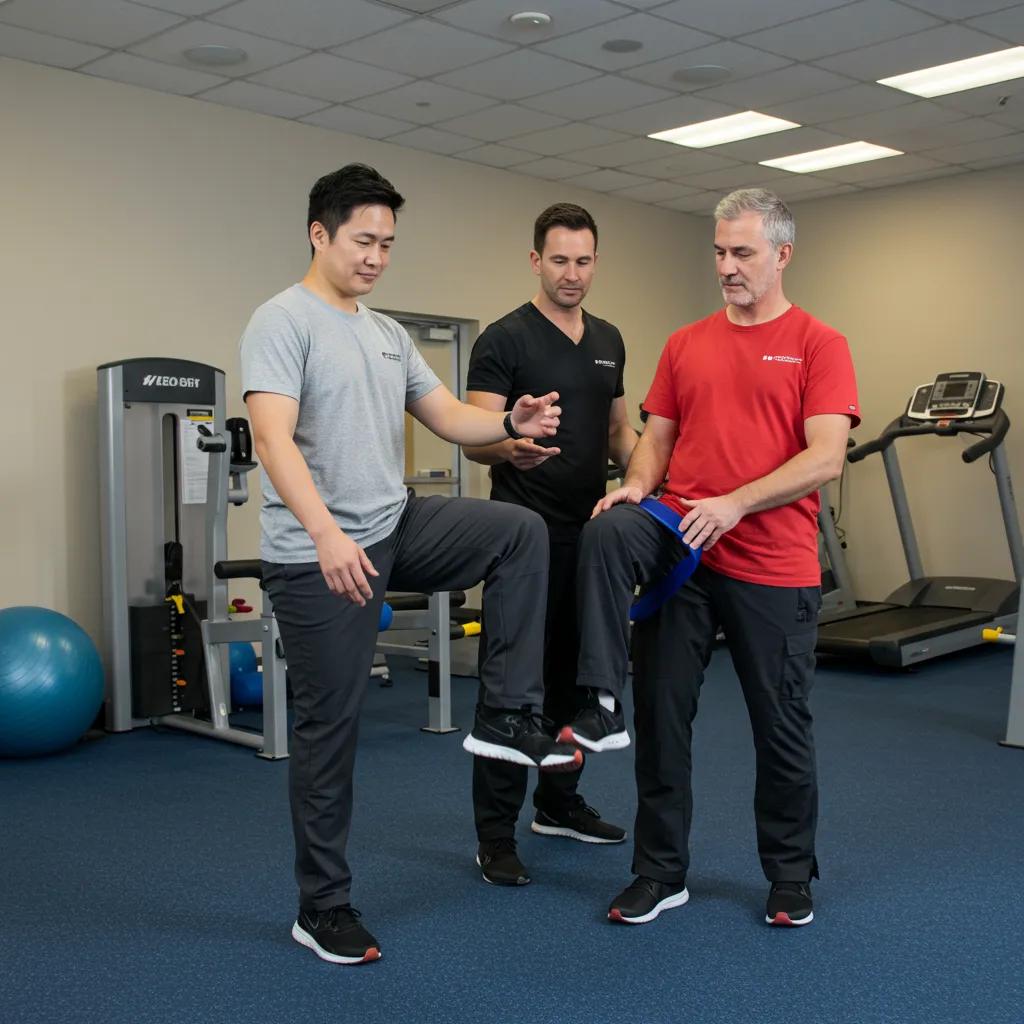
Physical therapy for knee pain includes exercises to strengthen your quadriceps and hamstrings, neuromuscular retraining, and flexibility routines aimed at stabilizing the joint and correcting movement patterns. Our therapists utilize closed-chain exercises, proprioceptive drills, and functional training to reduce stress on your knee cartilage, improve alignment, and enhance shock absorption. This comprehensive approach supports cartilage health and alleviates discomfort caused by load.
How Does Regenerative Medicine, Including PRP and Stem Cell Therapy, Help Knee Pain?
Regenerative medicine harnesses your body’s natural healing capabilities to stimulate tissue repair within the knee. Platelet-rich plasma (PRP) concentrates growth factors that promote cartilage regeneration and reduce inflammation, while stem cell injections introduce mesenchymal cells that can differentiate into cartilage and help modulate immune responses. These processes encourage structural improvement and symptom relief in cases of early to moderate osteoarthritis.
What Is Genicular Artery Embolization and When Is It Used for Knee Osteoarthritis?
Genicular artery embolization helps reduce knee pain by selectively blocking small blood vessels that supply inflamed tissue in osteoarthritic knees. Under precise imaging guidance, embolic agents are introduced to decrease hypervascularity, thereby reducing synovial inflammation and the transmission of pain signals. This minimally invasive procedure is suitable for patients experiencing persistent osteoarthritis pain that hasn’t responded to injections or physical therapy.
How Do Non-Surgical Treatments Compare to Knee Replacement Surgery?
Non-surgical interventions typically offer shorter recovery times, lower risks of complications, and preserve your natural joint structures when compared to total knee arthroplasty. While knee replacement surgery can provide definitive structural correction, conservative strategies can delay the need for a prosthesis, maintain normal joint biomechanics, and avoid potential issues associated with artificial implants. For appropriate candidates, a phased approach empowers joint preservation and personalized pain management.
| Treatment Option | Invasiveness | Recovery Time |
|---|---|---|
| Physical Therapy | Low | Weeks to Months |
| Platelet-Rich Plasma & Stem Cells | Moderate | Days to Weeks |
| Genicular Artery Embolization | Minimal | Days |
| Knee Replacement Surgery | High | Months |
Each non-surgical method offers a balance of effectiveness and safety tailored to individual goals, while surgery remains a consideration for cases where conservative care proves insufficient.
What Non-Surgical Options Are Available for Neuropathy Treatment in Houston?
Our approach to peripheral neuropathy management focuses on nerve modulation, pain interruption, and functional restoration without resorting to invasive surgery. Campbell Clinic utilizes electric cell signaling, targeted nerve blocks, and rehabilitative exercises to alleviate the burning, numbness, and tingling sensations associated with nerve damage.
How Does Electric Cell Signaling Therapy Provide Relief for Peripheral Neuropathy?
Electric cell signaling therapy employs low-level electrical currents to stimulate neurovascular networks, enhancing local blood flow and promoting nerve repair. By modulating ion channels and nerve membrane potentials, this drug-free method effectively reduces neuropathic pain and supports the regeneration of damaged axons. Patients often report a gradual reduction in symptoms and improved sensation over a series of treatment sessions.
What Role Do Nerve Blocks Play in Managing Neuropathy Pain?
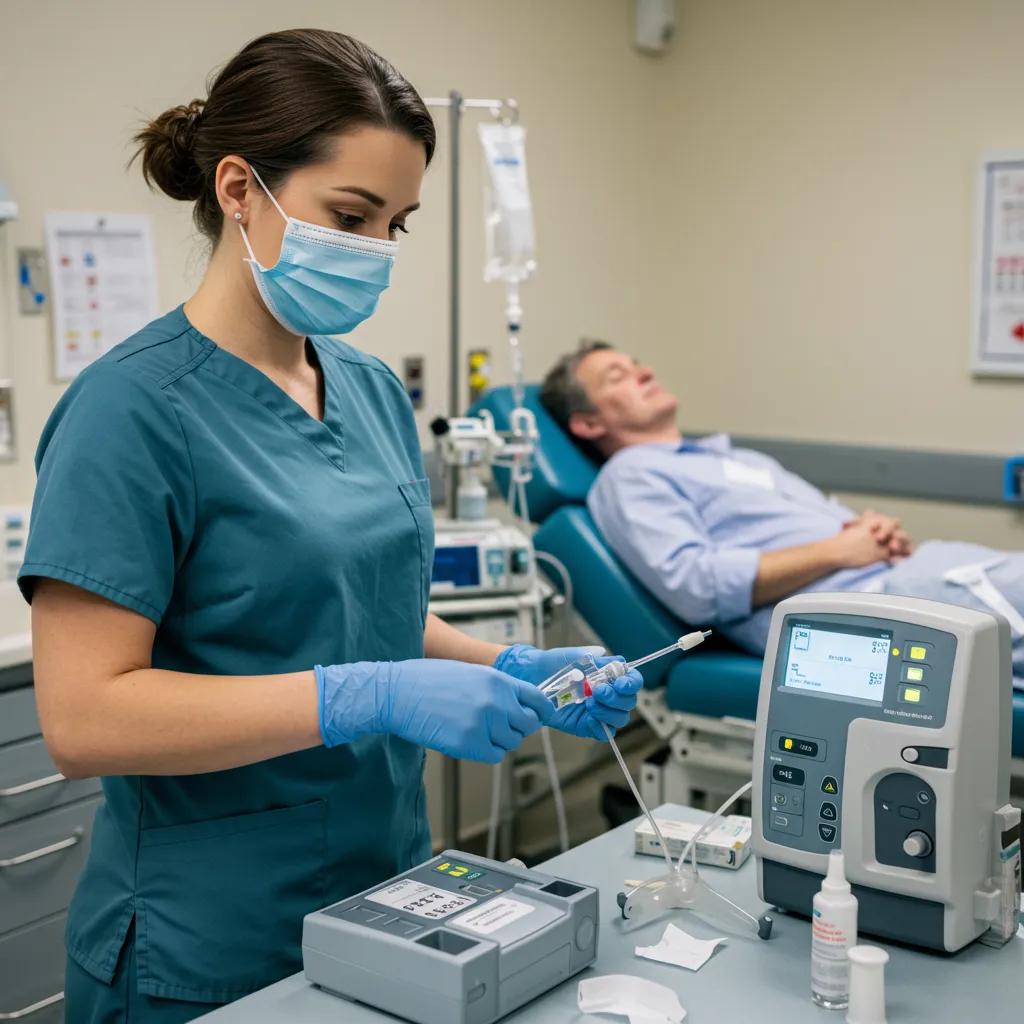
Nerve blocks involve injecting anesthetic or anti-inflammatory agents near affected nerves to interrupt pain transmission. Whether performed with ultrasound or fluoroscopy guidance, these injections offer rapid pain relief and enable patients to engage more effectively in rehabilitative therapies. Repeated nerve blocks can help reset pain pathways and complement long-term management strategies.
How Can Physical Therapy Improve Function and Reduce Neuropathy Symptoms?
Physical therapy for neuropathy focuses on balance training, gait normalization, and muscle strengthening to help compensate for sensory deficits. Through proprioceptive exercises and adaptive strategies, patients can regain stability and confidence, which reduces their risk of falls and enhances their overall quality of life. This supportive therapy forms a crucial foundation for ongoing symptom management.
What Is Interventional Pain Management and How Is It Used in Houston for Non-Surgical Relief?
Interventional pain management integrates minimally invasive procedures that precisely target pain generators, offering effective alternatives to systemic medications and major surgery. At Campbell Clinic, we employ a range of image-guided techniques to disrupt pain signals, reduce inflammation, and improve function across various chronic pain conditions.
Which Minimally Invasive Procedures Are Common in Interventional Pain Management?
Common interventions include epidural steroid injections, facet joint injections, nerve root blocks, and radiofrequency ablation. Each procedure is designed to target specific anatomical structures responsible for pain, utilizing imaging guidance for maximum precision. These therapies effectively relieve pain at its source and facilitate engagement in rehabilitative programs.
What Are the Benefits and Risks of Radiofrequency Ablation for Chronic Pain?
Radiofrequency ablation uses heat generated by alternating current to carefully target and deactivate pain-transmitting nerve fibers, providing extended relief. The benefits include six to twelve months of reduced discomfort, improved mobility, and a decreased reliance on pain medication. Risks, such as temporary numbness or a brief flare-up of symptoms, are rare when performed by experienced specialists in a controlled environment.
How Do Nerve Blocks and Epidural Injections Work to Reduce Pain?
Nerve blocks temporarily interrupt pain signals by delivering anesthetic agents to specific nerve roots or peripheral nerves, while epidural injections help reduce inflammation around the spinal cord. Both methods effectively block nociceptive signals, allowing patients to regain movement and pursue rehabilitative exercises that support sustained improvement.
Why Choose Campbell Clinic for Non-Surgical Pain Relief in Houston?
Campbell Clinic combines specialized orthopaedic pain management expertise with a patient-focused approach to deliver customized non-surgical solutions. Our dedicated team integrates advanced diagnostics, evidence-based therapies, and compassionate support to guide each patient toward significant functional improvements and an enhanced quality of life.
What Expertise Does Campbell Clinic Offer in Orthopedic and Pain Management?
Our specialists are highly trained in physical medicine, interventional techniques, and regenerative biologics, ensuring comprehensive care for conditions such as back pain, knee osteoarthritis, and neuropathy. By coordinating multidisciplinary resources under one roof, we streamline treatment planning and provide cohesive, outcome-driven protocols.
How Does Campbell Clinic Provide Patient-Centered Non-Surgical Care?
We prioritize thorough individual assessments, clear patient education, and collaborative decision-making to align treatment goals with your lifestyle. Dedicated care coordinators manage scheduling, track progress, and facilitate necessary adjustments, ensuring your treatment plan evolves effectively with your response and feedback.
What Are the Steps to Book a Consultation for Non-Surgical Pain Relief?
To begin your journey to relief, simply complete a brief intake assessment, undergo a detailed evaluation with our specialists, and receive a personalized treatment roadmap. Our team handles all administrative tasks, verifies your insurance benefits, and coordinates your therapy sessions, ensuring a seamless transition from your initial consultation to active treatment.
Frequently Asked Questions
What is the role of nutrition in non-surgical pain relief strategies?
Nutrition plays a crucial role in non-surgical pain relief by providing the body with essential nutrients that can reduce inflammation and support healing. A diet rich in anti-inflammatory foods, such as fruits, vegetables, whole grains, and omega-3 fatty acids, can help alleviate pain symptoms. Additionally, maintaining a healthy weight through proper nutrition reduces stress on joints, which is particularly beneficial for conditions like arthritis and back pain. Consulting with a nutritionist can help tailor dietary choices to enhance your pain management plan.
How long does it typically take to see results from non-surgical treatments?
The time it takes to see results from non-surgical treatments can vary significantly based on the individual and the specific condition being treated. Many patients may start to experience relief within a few days to weeks after beginning therapies like physical therapy or injections. However, for more complex issues, it may take several weeks or even months to achieve optimal results. Consistent follow-up with your healthcare provider is essential to monitor progress and make necessary adjustments to your treatment plan.
Are there any side effects associated with non-surgical pain relief treatments?
While non-surgical pain relief treatments are generally considered safe, some patients may experience mild side effects. For instance, injections can lead to temporary soreness at the injection site, and physical therapy may cause initial discomfort as the body adjusts to new exercises. Regenerative treatments like PRP may also have minor risks, such as swelling or bruising. It’s important to discuss potential side effects with your healthcare provider to ensure you are well-informed and prepared for your treatment journey.
Can non-surgical treatments be combined with other therapies?
Yes, non-surgical treatments can often be combined with other therapies to enhance overall effectiveness. For example, physical therapy can be integrated with nutritional counseling, pain management techniques, and lifestyle modifications to create a comprehensive treatment plan. Additionally, combining therapies like acupuncture or chiropractic care with conventional treatments may provide synergistic benefits. Always consult with your healthcare provider to develop a coordinated approach that aligns with your specific needs and goals.
What should I expect during my first consultation for non-surgical pain relief?
During your first consultation for non-surgical pain relief, you can expect a thorough assessment of your medical history, current symptoms, and lifestyle factors. The healthcare provider will likely perform a physical examination and may recommend diagnostic imaging if necessary. Based on this evaluation, they will discuss potential treatment options tailored to your needs. This initial visit is also an opportunity for you to ask questions and express any concerns regarding your pain management journey.
How can I maintain long-term pain relief after treatment?
Maintaining long-term pain relief after treatment involves a combination of ongoing self-care strategies and regular follow-up with your healthcare provider. Engaging in prescribed physical therapy exercises, adhering to a healthy diet, and managing stress through techniques like mindfulness or yoga can significantly contribute to sustained relief. Additionally, staying active and avoiding activities that exacerbate your pain will help preserve your progress. Regular check-ins with your provider can ensure that your pain management plan remains effective over time.
How Can Physical Therapy and Lifestyle Changes Enhance Non-Surgical Pain Relief Outcomes?
Integrating physical therapy with healthy lifestyle habits significantly amplifies clinical results by addressing both the mechanical and systemic factors contributing to pain. Rehabilitative exercises restore strength and flexibility, while optimizing your diet and managing weight helps minimize joint stress and inflammation. Telemedicine further extends this support through remote monitoring, guidance on home exercises, and timely adjustments to your therapy protocols.
What Exercises Are Recommended for Chronic Back and Knee Pain?
A combination of core stabilization exercises, hip strengthening routines, and gentle lumbar stretches supports spinal health, while quadriceps sets, straight-leg raises, and hamstring mobilizations help protect your knee joints. These exercises reinforce proper joint alignment, reduce compensatory movement patterns, and promote balanced muscle function.
How Do Diet and Weight Management Influence Pain Relief?
Maintaining a balanced diet rich in anti-inflammatory nutrients—such as omega-3 fatty acids, antioxidants, and lean proteins—can help reduce systemic inflammation that often exacerbates joint and nerve pain. Effective weight management lowers the mechanical load on your spine and knees, thereby decreasing pain intensity and improving overall mobility.
Can Telemedicine Support Non-Surgical Pain Management in Houston?
Telemedicine services offer virtual consultations, exercise supervision, and symptom tracking that effectively complement in-clinic interventions. By providing timely adjustments to exercise protocols and guidance on managing your condition, remote appointments enhance adherence and reinforce your active role in the non-surgical care journey.
Non-surgical pain relief in Houston offers a comprehensive range of targeted therapies, from rehabilitative programs and regenerative biologics to precision injections and minimally invasive procedures. Campbell Clinic’s specialized orthopaedic pain management expertise ensures that each strategy is precisely matched to your individual needs, promoting functional restoration without surgery. Embracing therapeutic exercises, nutritional support, and remote monitoring further solidifies long-term success. Begin your path to lasting relief by scheduling a consultation with our team today.

